For the past few years I’ve started the new year off publishing a post with my top ten reads from the previous year. I read less in 2023 than in previous three years. I averaged only one to two books a month. Some were pure escapism mysteries in series I like. As I looked over the list to write this post, I could not find ten I wanted to highlight. But I did find eight.
Here are my top eight reads of 2023, listed in the order in which I read them. (Note: Only one of the books was published in 2023. The rest of the books have publishing dates between 2017 and 2022.)
1. 21 Things You May Not Know About The Indian Act by Bob Joseph
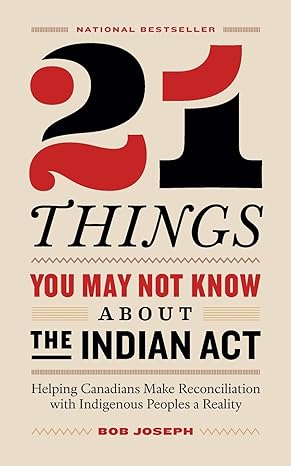
Since its creation in 1876, the Indian Act has shaped, controlled, and constrained the lives of Indigenous Peoples in Canada. I think many non-Indigenous Canadians are unaware of the far-reaching extents of the Act, which, despite changes over the years, remained oppressive. Its mandates and consequences are at the root of many negative stereotypes. 21 Things You May Not know About the Indian Act, written by leading cultural sensitivity trainer Bob Joseph and first published in 2018, is eye-opening and disturbing.
You’ll read, among other things, about how the Act created residential schools, denied First Nations the right to vote or create political organizations, expropriated reserve land, forbade the use of First Nations languages, and introduced a permit system controlling the movement of First Nations.
The book is both easy and difficult to read. It is a short book written in a way that is easy to read and understand, but its content can be difficult to absorb and may give you need to pause from time to time. Joseph talks about how Indigenous Peoples can step out from under the Indian Act and about the complex issues around truth and reconciliation. Increasing peoples’ knowledge about the cruel foundation laid by the Indian Act is a critical part of reconciliation. I highly recommend that all Canadians read this book.
2. Long Bright River by Liz Moore
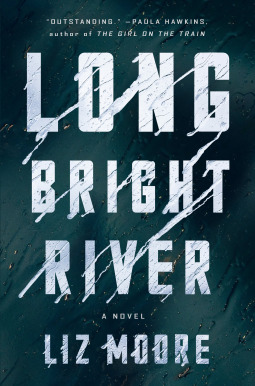
Published by River Head Books in 2020, Long Bright River by Liz Moore follows two sisters in a Philadelphia neighbourhood rocked by the opioid crisis. Once close, the sisters no longer speak. Kacey lives on the streets in the vise of addiction. Mickey walks those same blocks on her police beat and never stops worrying about her sister. When Kacey disappears at the same time as a string of mysterious murders begins, Mickey become obsessed with finding the culprit and her sister before she becomes a victim.
The story goes back and forth between present day and the sisters’ childhood and adolescence. It was named a Best Book of the Year by NPR and BUZZFEED and was one of Barack Obama’s favourite books of the year. It is a gripping story classified as a mystery/thriller, but it is also a story about sisters, family, and addiction.
3. American Dirt by Jeanine Cummins
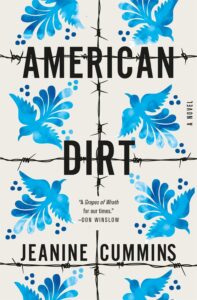
I’ve been wanting to read American Dirt by Jeanine Cummins, first published in 2020 by Flatiron Books, for a couple of years. 2023 was the year I finally got around to it. Lydia leads a mostly comfortable life in Acapulco, but is forced to flee after her journalist husband writes a tell-all profile about the newest drug lord. Her husband and extended family are murdered at a family party. Only Lydia and her son Lucas survive. They join countless others trying to reach the United States while trying to stay “under the radar” of the drug cartel.
The book is a page turner, a thriller of sorts. The people Lydia and Lucas meet along the way are interesting and their stories are heartbreaking. Lydia and Lucas manage through all kinds of desperate situations and have to decide who to trust and who not to trust.
The book was a best seller and an Oprah’s Book Club pick, but it also had a variety of mixed reviews and generated a lot of controversy. Cummins is not Mexican nor is she an immigrant. Questions were raised about whether this was her story to tell. Critics also said that the plot over-simplifies some of the people and many of the situations. A New York Times review described the book as shallow and poorly written, referencing “tortured sentences.” Other reviews praised the book. One noted that it “captures what it is like to have the familiar order of things fall away.”
I found the book to be a compelling read. Even if the complexities around the causes and journeys of the migrant caravans may be simplified, the book makes one think about them and feel empathy for those having to flee.
4. Take Your Breath Away by Linwood Barclay
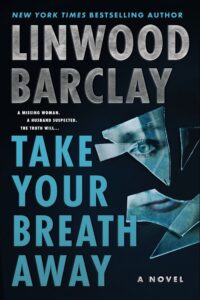
Published by William Morrow in 2022, Take Your Breath Away by Linwood Barclay is a psychological thriller about a formerly missing woman who reappears under mysterious circumstances. While Andrew Mason was on a weekend fishing trip, his wife Brie disappeared. Many assumed Mason got away with murder, but the police couldn’t build a strong case. Mason began to drink too much, lost most of his friends, and nearly lost his business. Six years later, he has life back together, is living in a different house, and has a new life partner. Then a woman resembling Brie shows up at his former house screaming, “Where’s my house?”
Linwood Barclay is one of my favourite mystery writers. He writes stand-alone mysteries where the protagonists are ordinary people, that is they are not policepersons or detectives. He is an absolute master of twists and turns. Take My Breath Away is one of his best.
5. Valley of the Birdtail by Andrew Stobo Sniderman and Douglas Sanderson
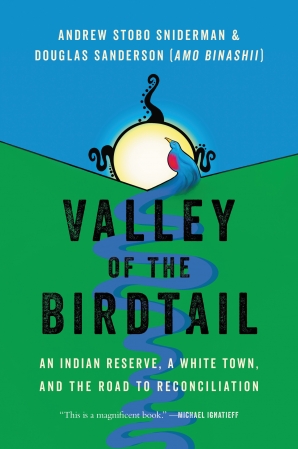
Valley of the Birdtail by Andrew Stobo Sniderman and Douglas Sanderson was my top read of 2023. It is a book I think everyone should read.
Subtitled An Indian Reserve, a White Town, and the Road to Reconciliation, this award-winning non-fiction book published by HarperCollins Canada in 2022 follows multi-generations of two families, one Indigenous and one white, who live in neighbouring communities that are worlds apart. Waywayseecappo Indian Reserve was created on the west side of the Birdtail River in western Manitoba in 1877. Rossburn, located on the east side of the Birdtail River, was originally settled by Ukrainian immigrants in 1879. The communities shared a valley but lived different realities.
The stories of family members are interwoven with historical background and legal and political analysis. It becomes apparent how different treatment by government created and entrenched inequities between Indigenous and non-Indigenous communities. Seeing the impact on real individuals brings home the cruelty of the Indian Act. Although the focus is on two communities and two families, the story can be extended to a broader history of Canada.
The book started as a 2012 Maclean’s magazine article written by Sniderman when he was a law student. A few years later he wrote a follow-up. Wanting to dig deeper, he came to Manitoba in 2017. He reached out to Sanderson, his former law professor and a member of the Opaskwayak Cree Nation, to help him write this book. In their notes at the beginning of the book they say, “We wrote this book because schools on reserves have been grossly underfunded for decades. To reckon with this appalling fact is to discard the comforting notion that discrimination against Indigenous Canadians occurred in the distant past, perpetuated by strangers who are long dead.” They also quote Murray Sinclair, former chair of Canada’s Truth and Reconciliation Commission, who said, “The truth will set you free. But first it’s going to piss you off.”
There is plenty in the book to “piss you off.” You’ll come face to face with the injustices that led to stereotypes and fear and distrust of each other. You may also come face to face with your own prejudices and biases. The book is wonderfully written and engaging. This was one book where I stopped many times to read a part to my husband or share a story with him. And it offers hope. The story of Waywayseecappo school at the end of the book is miraculous. They found a way to equalize funding and take advantage of all the services available in the neighbouring non-Indigenous school division. Students from Rossburn now come to Waywayseecappo for some classes not available at their school. The divide between the communities has lessened. It may leave you wondering why we can’t replicate this model throughout the country.
6. The Russian Daughter by Sarah Klassen
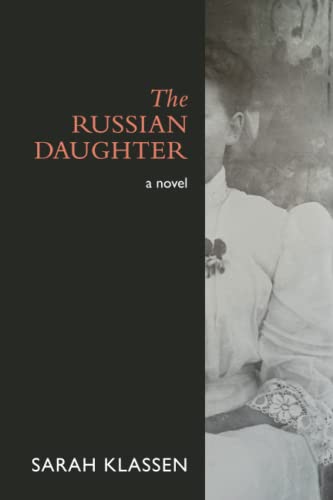
Published in 2023 by Wipf and Stock, The Russian’s Daughter by Sarah Klassen is about Sofia, a Russian girl adopted as a baby by a Mennonite couple living in what is now Ukraine at the end of the Czarist empire. The family’s lives takes twists and turns over the years and they face unexpected challenges in a violent and unstable era. Sofia is unlike everyone around, yet still needs love. The blurb about this historical fiction book says it explores themes of belonging, responsibility, and the places we call home.
The writing is plain but elegant and the book is easy to read. I found myself annoyed with some of the characters at times and worried at others. That is perhaps a good sign that they had become somewhat real to me.
7. The Marrow Thieves by Cherie Demaline
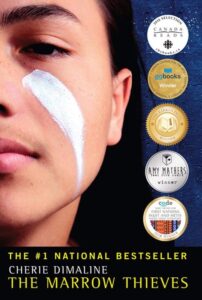
Published in 2017 by Dancing Cats Books, The Marrow Thieves by Cherie Demaline takes place in a futuristic world ravaged by global warming. People have lost their ability to dream and that has led to widespread madness. The only people still able to dream are North American’s Indigenous peoples. It is their bone marrow that holds the cure for the rest of the world. Recruiters seek out and capture Indigenous people to take them to the marrow-stealing factories.
The book follows fifteen-year-old Frenchie as he joins a group of others struggling to survive and avoid the recruiters as they head north to the old lands. The group becomes a family of sorts. The reader gets to know and connect with the characters as the story unfolds. The challenges of the constant struggle to survive creates a tension that moves the story along.
I found the book a little difficult to get into at the start, but I wasn’t long into it before I was hooked and wanted to keep reading. It is well-written with excellent descriptions. The characters and their relationships are relatable. There are many layers to the story. Although futurist, it doesn’t seem that far from reality. Climate change and human action or inaction could very well lead to that kind of world. The marrow-stealing factories echo the residential schools of the not-so-distant past. An elder in the group regularly shares stories about Indigenous history and culture to keep the memory alive. In spite of the dark topics, there is hope and moments of joy.
This book was one of this year’s book club reads. I doubt I would have readily picked it otherwise. I don’t generally read futuristic books. It is classified as young adult, although I think it is appropriate for any age of adult. I am glad I read it. There is something to be said for book clubs and broadening your choice of reading.
8. Butcher by Nicolas Billon
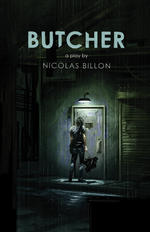
Butcher by Nicolas Billon is actually a play. Plays are not something I usually read, but I enjoyed reading this one. It starts with an old man in a military uniform and a Santa hat being dumped at a police station. He doesn’t speak English. A lawyer’s business card is contained on the meat hook that hangs on his neck. As the play unfolds, the lawyer, the police detective, and a translator work to unravel the truth. There are some comedic moments and a few twists and turns. The trauma of a hideous war crime is revealed and no one is whom they seem to be.
This was an easy, page-turner type of read. I could visualize the play. It would be very interesting to see the play performed. It was first produced in 2014 at The Alberta Theatre Projects in Calgary, Alberta.

Read several of these! And will check out more.
All of these books sound very good. Thanks for the reviews. Neil S.